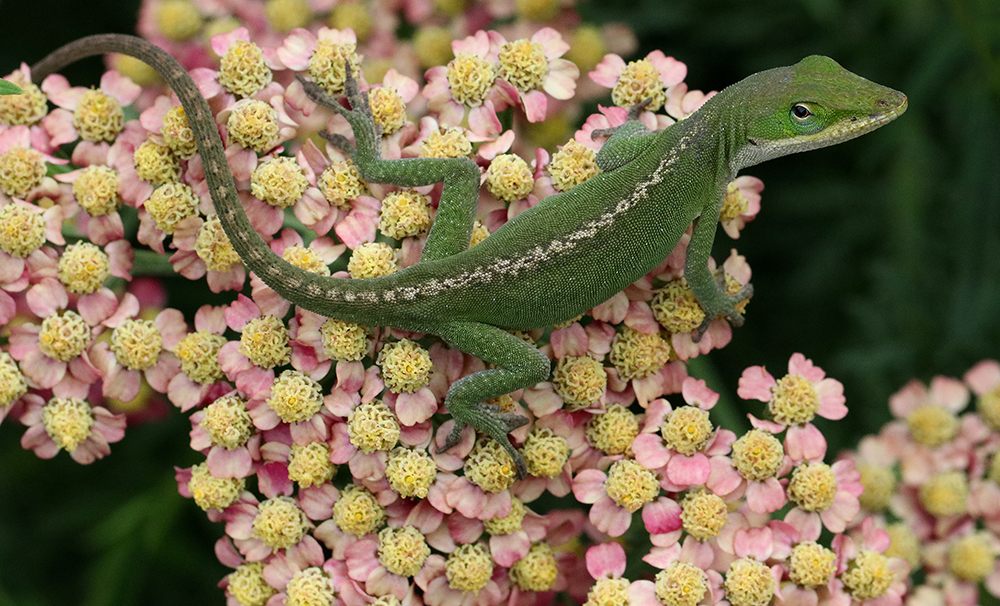Late Spring 2022 Snapshots From Extension’s Pollinator Paradise Garden
go.ncsu.edu/readext?874354
en Español / em Português
El inglés es el idioma de control de esta página. En la medida en que haya algún conflicto entre la traducción al inglés y la traducción, el inglés prevalece.
Al hacer clic en el enlace de traducción se activa un servicio de traducción gratuito para convertir la página al español. Al igual que con cualquier traducción por Internet, la conversión no es sensible al contexto y puede que no traduzca el texto en su significado original. NC State Extension no garantiza la exactitud del texto traducido. Por favor, tenga en cuenta que algunas aplicaciones y/o servicios pueden no funcionar como se espera cuando se traducen.
Português
Inglês é o idioma de controle desta página. Na medida que haja algum conflito entre o texto original em Inglês e a tradução, o Inglês prevalece.
Ao clicar no link de tradução, um serviço gratuito de tradução será ativado para converter a página para o Português. Como em qualquer tradução pela internet, a conversão não é sensivel ao contexto e pode não ocorrer a tradução para o significado orginal. O serviço de Extensão da Carolina do Norte (NC State Extension) não garante a exatidão do texto traduzido. Por favor, observe que algumas funções ou serviços podem não funcionar como esperado após a tradução.
English
English is the controlling language of this page. To the extent there is any conflict between the English text and the translation, English controls.
Clicking on the translation link activates a free translation service to convert the page to Spanish. As with any Internet translation, the conversion is not context-sensitive and may not translate the text to its original meaning. NC State Extension does not guarantee the accuracy of the translated text. Please note that some applications and/or services may not function as expected when translated.
Collapse ▲In late 2008, I planted a demonstration pollinator garden at Chatham Mills to provide forage from early spring to late fall for pollinators such as honey bees, native bees, butterflies, flower flies, hummingbirds, beetles, and other beneficial insects. The garden features over 225 unique species of perennials, 85% of which are native to North Carolina. The garden is a great teaching tool that I use to conduct workshops and tours for hundreds of folks each year. It has taught me so much and I enjoy sharing this knowledge with others. Below you can see photos of the pollinator garden from mid-May through mid-June. There were over 60 species in bloom in mid-June!
Register for a Tour of the Pollinator Paradise Garden.

Lovely combo of butterfly weed, downy wood mint, and prairie poppy mallow. Photo by Debbie Roos.

Paper wasp foraging on nodding onion (Allium cernuum). Photo by Debbie Roos.

Carolina anole on yarrow (Achillea millefolium ‘Paprika’). Photo by Debbie Roos.

I spy with my little eye…Photo by Debbie Roos.

Bumble bee on green milkweed (Asclepias viridis). Photo by Debbie Roos.

American lady butterfly on purple coneflower (Echinacea purpurea). Photo by Debbie Roos.

Gray hairstreak on dwarf indigo bush (Amorpha herbacea). Photo by Debbie Roos.

White wild indigo (Baptisia alba) with butterfly weed (Asclepias tuberosa). Photo by Debbie Roos.

Leafcutter bee on white wild indigo (Baptisia alba). Photo by Debbie Roos.

Juniper hairstreak on butterfly weed (Asclepias tuberosa). Photo by Debbie Roos.

Bumble bee on purple prairie clover (Dalea purpurea). Photo by Debbie Roos.

Rattlesnake master (Eryngium yuccifolium) and basil beebalm (Monarda clinopodia). Photo by Debbie Roos.

Carpenter-mimic leafcutter bee on common milkweed (Asclepias syriaca). Photo by Debbie Roos.

Wild quinine (Parthenium integrifolium) with dwarf indigo bush (Amorpha herbacea). Photo by Debbie Roos.

Unopened bee balm bloom (Monarda fistulosa ‘Claire Grace’). Photo by Debbie Roos.

St. John’s wort (Hypericum frondosum ‘Sunburst’) and butterfly weed (Asclepias tuberosa). Photo by Debbie Roos.

American snout butterfly on Loomis’ mountain mint (Pycnanthemum loomisii). Photo by Debbie Roos.

Young green lynx spider feeding on bee on black-eyed susan (Rudbeckia hirta). Photo by Debbie Roos.

One of the parking lot island beds. Photo by Debbie Roos.

Bumble bee on scaly blazing star (Liatris squarrosa). Photo by Debbie Roos.

Another parking lot island bed. Photo by Debbie Roos.
View Photos from Early Spring 2022 in the Pollinator Garden.
For more information:
Pollinator Paradise Garden website
What’s in Bloom in the Pollinator Garden – updated bi-weekly!


